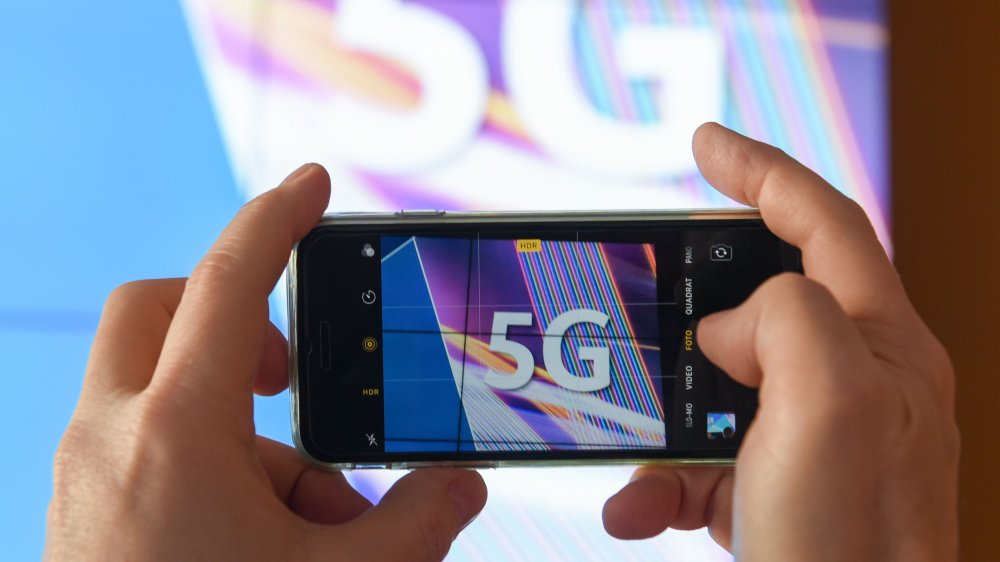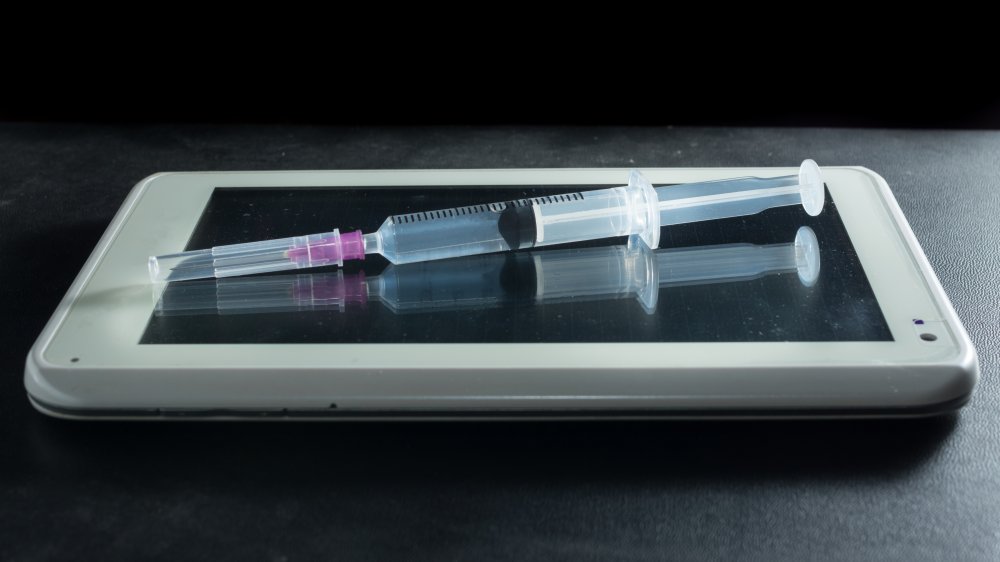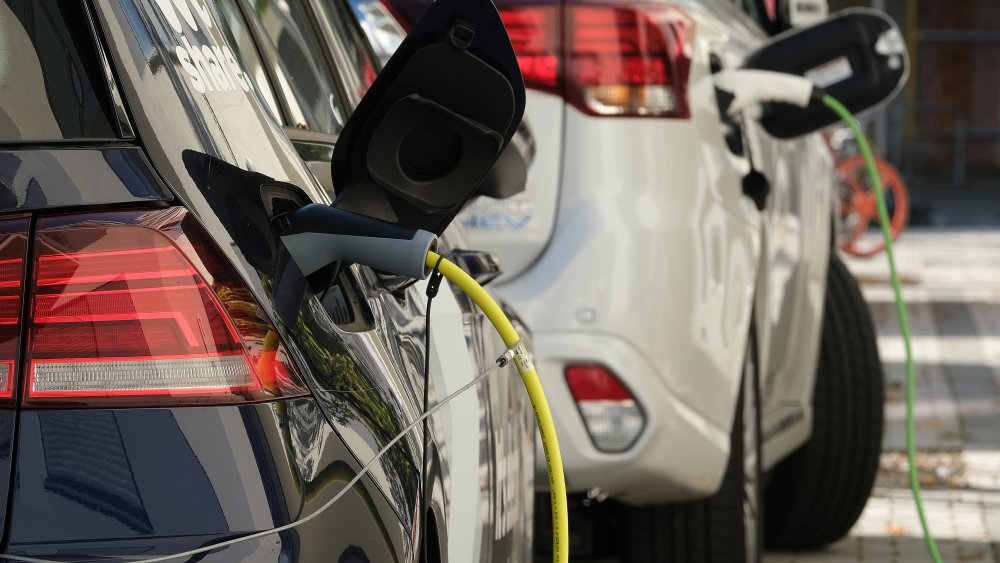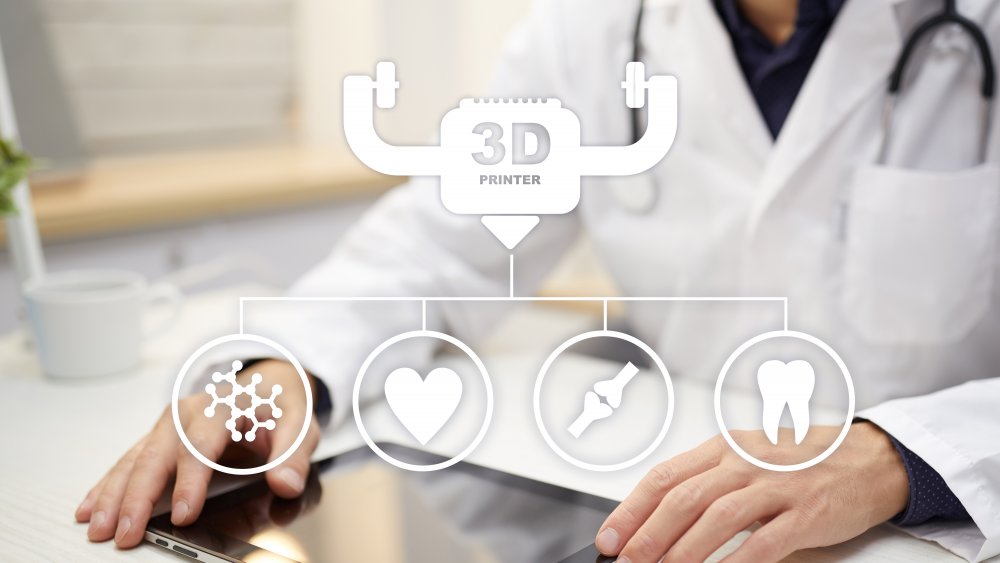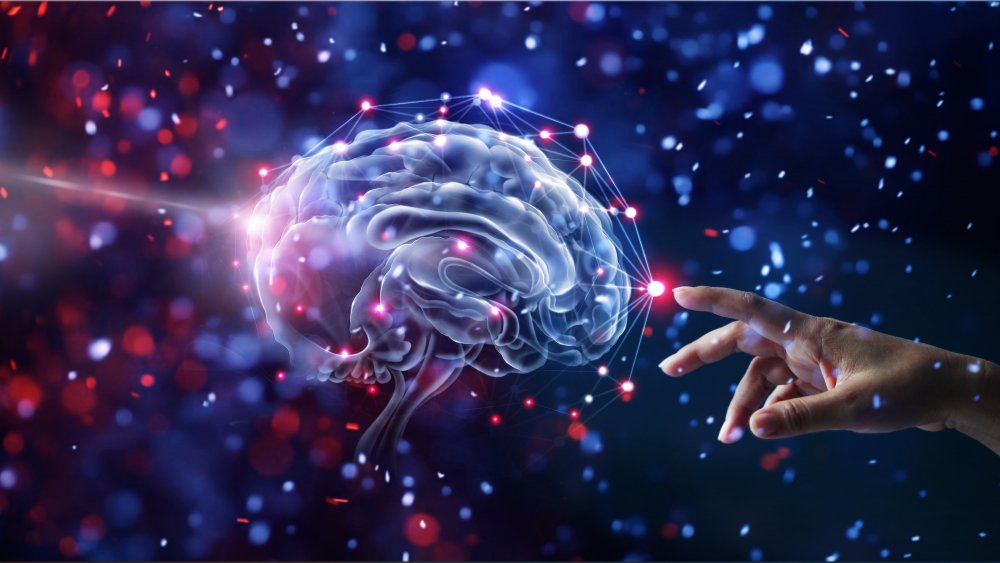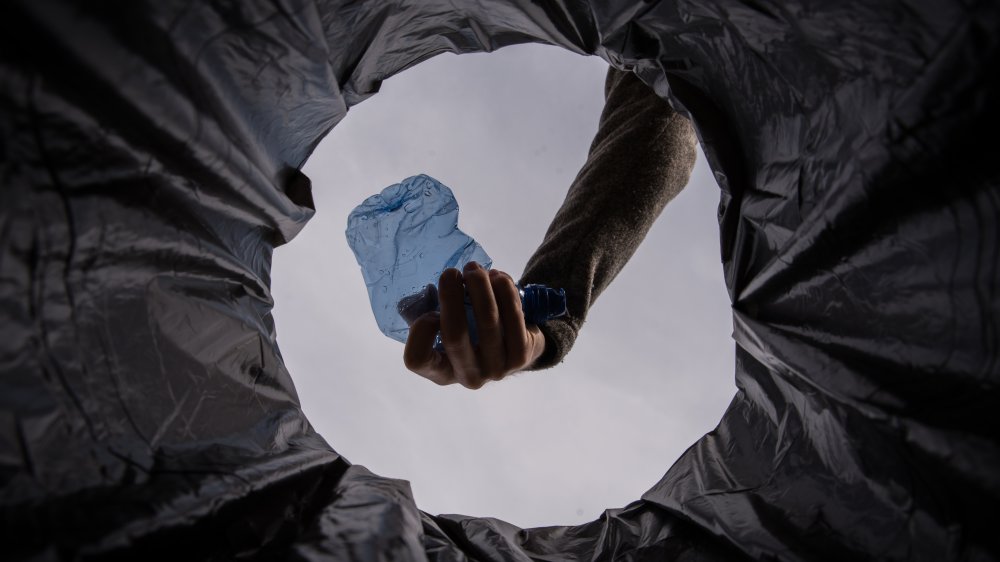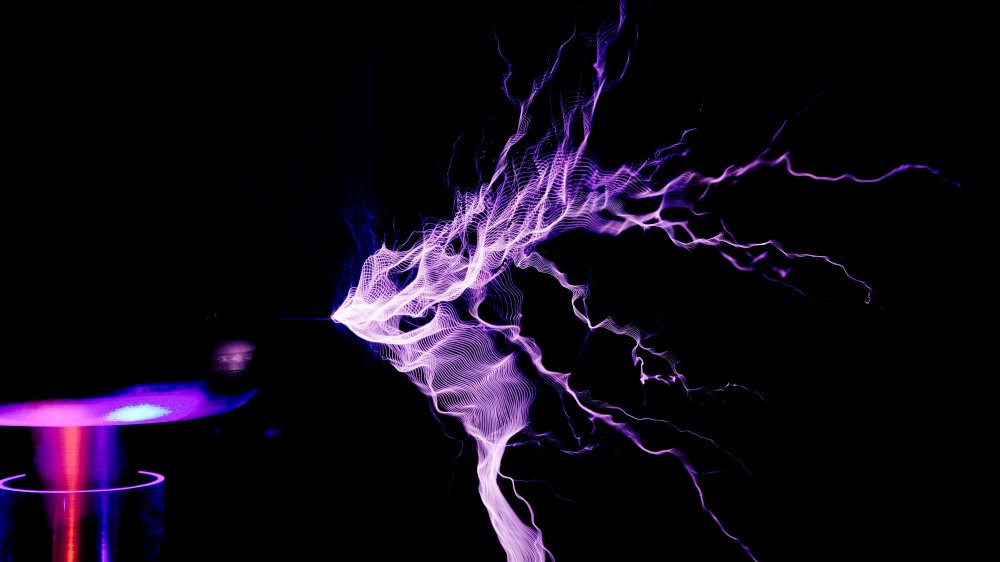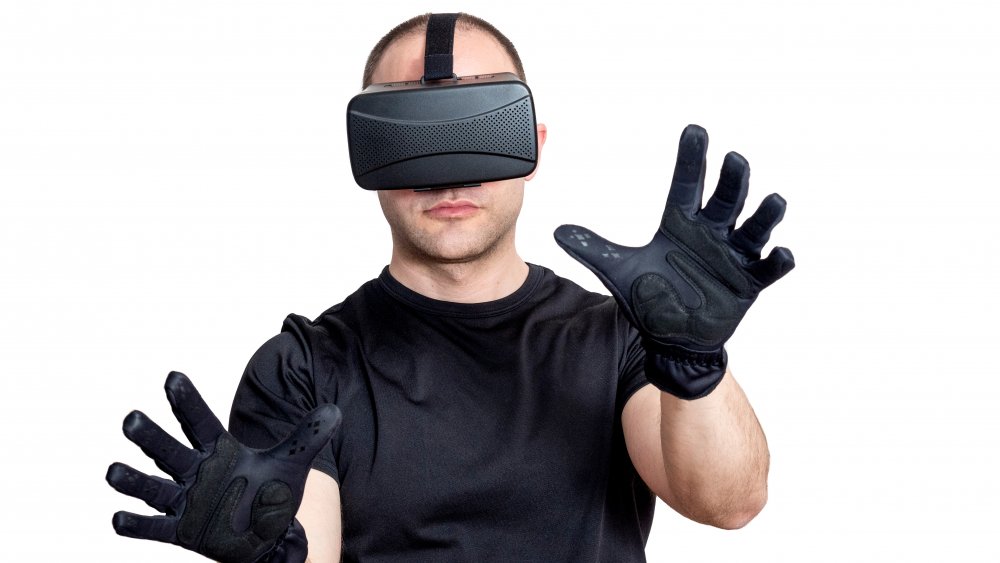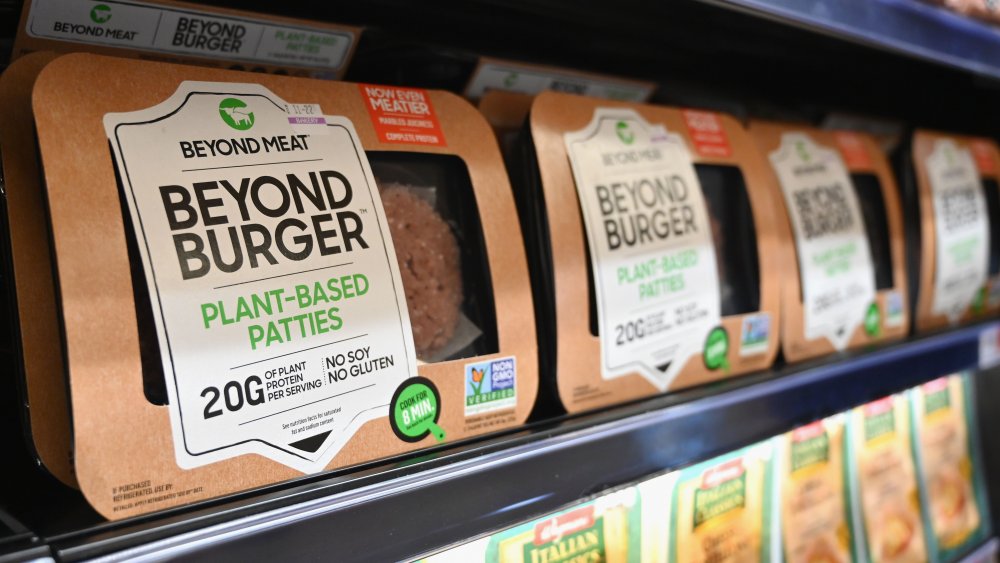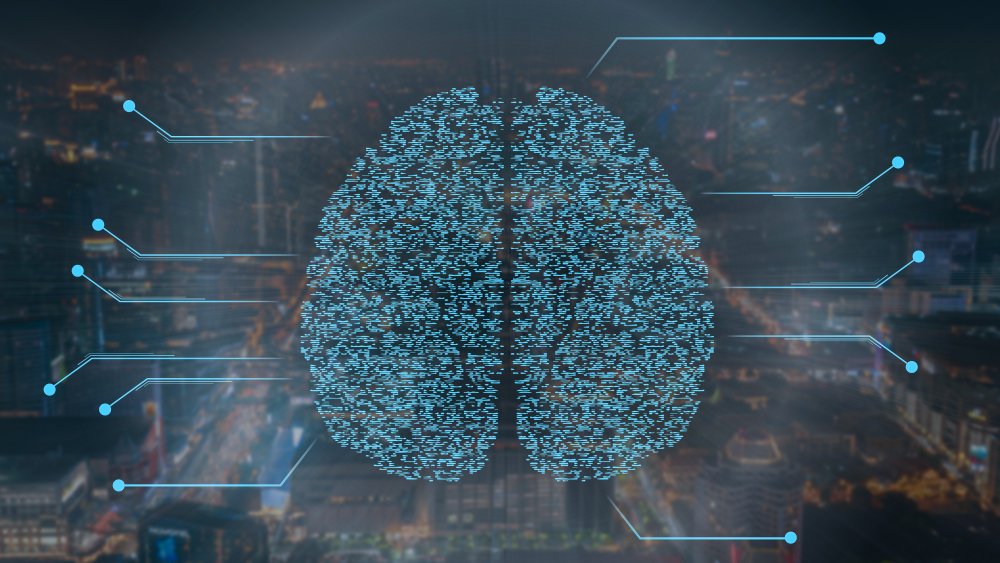These Will Be Some Of The Greatest Inventions Of 2020
Every few years, some new technology comes along to upend everything people knew. The internet, social media, streaming video, smartphones, and dozens more innovations have changed so many things about our daily lives, from how people communicate to how we work and even how we have fun.
The great thing is that technology never stops moving. We're all looking forward to things like teleportation, robot housekeepers, space vacations, time-traveling DeLoreans, and so on. But all of that is going to take time, so we'll just have to keep our eyes on the baby steps that will eventually get us there while we wait.
No one can predict the future (that invention is probably coming), but there are always new technologies on the horizon that will change things even more. These inventions will be here sooner than you think, so it's best to get yourself and your wallet ready for the next big thing.
5G networks will bring the internet everywhere
You may have already seen ads about 5G wireless phones. AT&T and Verizon both are setting up small connection points in public places, like sports stadiums, to show off what's to come. But that's just the tip of the iceberg. Right now, 5G doesn't have a lot of range, which is why it can only be used in small areas, but that won't always be the case.
According to Computer World, the 5G implementations out there right now use millimeter-wave technology, which uses the highest frequencies, but has the least range, which is why it can currently only cover portions of an NFL stadium, for example. This will change, however, as lower-frequency service is on the way, too, and while it won't be as fast, it will have greater range, and still be way faster than 4G LTE, the current standard.
The most exciting thing about 5G, though, is that it's not just for phones. 5G will be a full-on broadband internet service, meaning that instead of having one service for your mobile devices and one for home internet, you'll be able to get home 5G and take it with you, as well. That also means less reliance on wi-fi and more potential for devices with their own, dedicated connection. Most importantly of all, though, the portion of Americans who currently don't have access to broadband at home are might be covered by 5G wireless internet.
Smart needles will detect cancer in moments
While science continues to work toward a cure for cancer, there are still plenty of milestones to cross. Right now, most cancers aren't detected until something goes wrong. If you have a family history of a specific cancer, your doctor might test you for that occasionally. If something does come up, you'll typically need to go under the knife for a biopsy, which is then sent off to a lab, and then you hear something back in a week. If you're lucky.
But what if there was a better way? That's what the smart needle hopes to introduce. Cancerous tissue and healthy tissue refract light differently, according to Medical Xpress. The way the smart needle works is by shining fiber optic light through the tissue in question. The smart needle can then quickly calculate the scattering of light, which helps it determine if the tissue is sick or healthy. It takes seconds, and without painful surgery.
Best of all, the smart needle might reduce healthcare costs in general. Surgery and labs are expensive and can take a lot of advance planning. By detecting cancer right away, doctors can develop a treatment plan much faster, and the earlier the detection, the better. It could also make cancer screening more routine, catching more instances of cancer before they can become more difficult to treat.
Electric car batteries will only get better
Electric cars are becoming more likely to replace standard cars every year, but currently, one of the biggest things holding them back are batteries. Your typical electric car today only has a range of 150 to 310 miles and takes an hour or more to charge. Once your vehicle runs out of juice, you might be stuck waiting for it to recharge.
But two new innovations are on the way. First, a new discovery has reduced those hours long charge times down to just 10 minutes. It works by increasing the temperature of the battery as it charges, which researchers have found causes the charging reaction to occur far more quickly than it did before. Best of all, this doesn't degrade the battery at all, according to Science.The battery's lifespan remains the same.
Meanwhile, Swiss company Innolith claims to have created a new electric car battery than can offer 600 miles on a charge, according to The Verge. That's more than two tanks of gas for your average fossil fuel vehicle. It will take some time to release, and there are some skeptical folks out there, as independent researchers and reviewers haven't gotten to take a look at the battery themselves just yet. Even still, the race to create a more efficient and higher capacity battery is ongoing now, and they're only going to improve.
Smart food labels will reduce food waste
Most foods have a handy label to tell you when it's expired. If your peanut butter has a "best before" date of last week, you'd throw it out, right? Well, maybe you don't need to. Expiration dates on food are best guesses, and they're often overly conservative to reduce the liability of grocery stores, not because the food has actually gone bad, according to FoodDive. This creates a ton of unnecessary food waste.
In steps smart labels. These are much like the same labels that are currently on packaged food, but, well, smarter. Instead of just having a printed expiration date that's a guesstimate at the very best, these labels will actually detect the presence of disease or when something has spoiled. For example, a smart label that detects salmonella or other food-borne illnesses could be attached to the label of a package of meat, and it would change color if it detects anything dangerous. There are also time-based labels in the works.
Best of all, these labels would make it easier to track down contaminated products at any point along the chain, and make it easier for consumers to know that their food is tainted and must be disposed of. Soon, mass recalls of everything produced from a specific region or on specific dates can be replaced by just checking the label on the food itself. If the label hasn't changed colors, it's safe to eat.
3D bioprinting is now much closer
Finding new organs for people is a costly, long process. People still rely on donors, living or dead, to offer up their working organs, which are transplanted into the sick person. Then, the patient needs to take anti-rejection immunosuppressants for the rest of their lives. But 3D bioprinting promises to change this. A 3D bioprinter could "print" new organs or tissue in just a few days or even hours, using the basic building blocks of the body. What's more, these tissues could be made using the patient's own genetic material, reducing problems with rejection.
A major roadblock to 3D printed biological components, though, has been vasculature. Bioprinted tissue has largely been ineffective because there's no easy way to create a vascular system, meaning the tissue dies from lack of blood or oxygen. This is now changing thanks to a new model that has a full vascular system that can connect to the body's existing systems, according to Scientific American. For the first time, 3D printed tissue might just be viable as a replacement for regular human tissue.
What's really amazing is how the scientists who invented made it work. They used a material that would solidify under blue light, but needed to keep the light from touching everything. They used regular yellow food dye to accomplish this. It blocked the blue light in parts of the material that were unneeded and allowed the rest to solidify as normal.
Neural interfacing will let our brains connect to computers
While computers and the human brain both run on electrical signals, the two aren't compatible. Science has struggled with bridging the gap between the two, a technology called neural interfacing. If humans can figure that out, it might be possible to do things like view memories, and possibly even completely download someone's brain to a computer, among many other huge leaps in the understanding of the brain.
People might be able to get started on that very soon, thanks to controversial entrepreneur Elon Musk's Neuralink. Neuralink is working on a new neural interface that uses tiny, flexible connections instead of the stiff threads used in past interfaces, which had trouble with the brain's natural shifting inside the skull, according to The Verge. Instead, these micrometer-sized wires are very pliable. So pliable, in fact, Neuralink has even invented a neurosurgery robot specifically to implant the device. While the current design of the device is wired, Neuralink is also working on a wireless transmitter, worn behind the ear, that can collect all the data and even interface with a planned iPhone app.
Musk claims to have already gotten a monkey to control a computer using the technology, and according to CNET, Neuralink is planning their first human trial on a parapalegic person in 2020, assuming they receive FDA approval in order to do. If successful, this could signal a huge leap in neural interfacing.
Suspended animation could save a lot of lives
Suspended animation has been a mainstay of sci-fi for decades. Imagine being sick, then cryogenically frozen until a cure for your disease can be found. Even Matt Groening's animated comedy Futurama is based around this idea and often pokes fun at it, with cryogenically frozen or otherwise artificially preserved celebrities popping up 1,000 years from now. But humanity may now be taking its first steps toward a point where it isn't a joke and can instead be used to save lives.
While the current technology isn't going to freeze people for years or let them travel through space, it's still very useful. At the University of Maryland Medical Centre in Baltimore, doctors are currently experimenting with new technology, where the body's blood is replaced with ice-cold saline, dropping their body temperature dramatically, according to New Scientist. At that point, trauma victims that may have died in five minutes are given an extra two hours for surgeons to operate, which could be the difference between life and death.
The process has been performed on at least one human being, possibly more, but the full results aren't available yet. After two hours, the patient is warmed back up and, assuming the surgery went well, might well survive their trauma and live to see another day.
Plastic could be turned back into fuel
Plastic is notoriously non-biodegradable and one of the biggest waste products humans produce. Plastic is piling up so fast, it's overwhelming our landfills and collecting in our oceans. Plastic recycling does exist, but its efficacy is questionable and it's often expensive. Not all kinds of plastic can be recycled, either. There are also efforts underway to develop new ways of disposing of plastic, such as cultivating bacteria that can digest it.
But plastics, typically made with oil and other fossil fuels, might just have another path to being useful to use in the near future. As the world continues to run out of fossil fuels, scientists at Licella have developed the Catalytic Hydrothermic Reactor (Cat-HTR), according to Australian Broadcasting Corporation (not to be confused with the American Broadcasting Company). This reactor uses heat, pressure, and water to reduce the plastic down to more basic elements, namely the oils used to create the plastic in the first place. While the best idea for the future is to eventually not need to rely on oil at all, the Cat-HTR could help if it gets to a point where humanity is running out of oil before alternative energies can be fully developed.
Best of all, the Cat-HTR can reduce any kind of plastic into oil without the need for sorting. Furthermore, the plastic can be recycled over and over again, something that can't be done with most recycled plastics now.
Wireless power will make cables old-fashioned
A project famously pioneered by Nikola Tesla, wireless power has been proven to work for about a century. However, making it practical for everyday use has been another problem entirely. But wait, doesn't wireless charging already exist? It does, but current wireless power solutions require a special mat you place your device on. True wireless power, the kind Tesla envisioned, would be transmitted through the air at a distance.
Current wireless solutions rely on near-field technology, meaning the device and charging pad need to be touching each other. What will exist in the future are power transmitters that work sort of like wi-fi. They'll be able to charge everything in a room and, eventually, your whole house automatically and simultaneously. One of the players in this field is called Ossia, and their Cota system received FCC approval in 2019, according to VentureBeat.
Cota uses mid-field and far-field technologies to charge devices using radio frequency (RF) signals, the same signals used for cell phones and wi-fi. This allows devices to receive a few watts of power from dozens of feet away, and this is just the beginning of such technology. In the future, expect the range and wattage to increase. One of the coolest uses of this so far is Ossia's Forever Battery. This battery is shaped like a standard AA battery, but it receives power from a Cota system, so it effectively never runs out of charge.
People will be able to feel things in virtual reality
Virtual reality (VR) and augmented reality (AR) made a big splash in the last decade, but things will only get more interesting from here, starting with the ability to touch and feel the things we see through all the various kinds of computer-generated imagery. While experiments of this sort have been tried in the past, the results were often very bulky and required a ton of power, necessitating large batteries to be attached.
Now, though, new technologies are allowing for tactile "skins" that are far thinner and require far less power. One of these is developed by John A. Rogers and his team at Northwestern University. Their skin uses tiny, thin discs to create vibrations instead of bigger actuators you might find in a gaming controller or phone, which use a lot more power. What's more, they're thin enough they can be charged using near-field technology, meaning less reliance on large batteries, according to Scientific American.
Meanwhile, Swiss researchers at the École Polytechnique Fédérale de Lausanne (EPFL) have developed their own tactile skin, which works similarly, but uses pneumatic actuators instead and can provide very delicate amounts of tactile feedback all the way up to one newton of force. These aren't the only two groups working on this, either, so it's likely there will be haptic feedback patches all the way up to clothing like gloves and, someday, entire suits of second skin.
Plant-based meat is going to grow in new ways
2019 was the year of plant-based meats, with Beyond Meat and Impossible Foods introducing burgers that tasted just about identical to actual beef, but made entirely out of plants. Each company makes their burgers in their own ways, with Beyond Burgers sticking to natural ingredients like mung beans and Impossible Burgers using man-made ingredients like their patented heme, an artificial recreation of the chemicals that give meat its flavor.
But that's just the tip of the iceberg. Both companies are planning to refine the flavor and cost of their meat as time goes on, and they're working on other types of meat, too, like the Beyond Chicken that makes up KFC's still-in-testing vegan chicken, according to The New York Times. In the near future, humanity's looking at the possibility of completely animal-free meats of all kinds. If they end up being cheaper than actual meat, that could be a big gamechanger for how Americans eat and grocery shop.
They've also got more competition incoming from big food companies like Nestlé and Tyson, who are creating their own plant-based meats, according to The New York Times. This increased competition could lead to even faster innovation, making prices drop more sharply and tastier flavors to emerge. This, in turn, might reduce America's carbon footprint (livestock makes up a huge chunk of emissions) and free up resources currently used on keeping farm animals.
Artificial neurons could make brain injuries a thing of the past
Medicine has improved to the point it's possible to replace damaged parts basically all over the body. Bones, skin, organs, they can all be replaced. Even missing limbs can be replaced with prosthetics that are getting better all the time. But one thing medicine can't repair is brain tissue, whether it was damaged through trauma or disease.
Soon, though, that may change. Researchers from the University of Bath have developed the world's first solid-state neuron. This is a small chip that replicates the function of a neuron. It uses very little power and is tiny enough to fit comfortably in the skull. It can even be combined with other chips to replace large portions of brain tissue. In tests, the solid-state neurons have proven to have a 94 percent accuracy rate. It's not perfect, but it's a sight better than other attempts. Over time, this will improve.
Currently, they've only been tested on rats, who have simpler neurons than humans do, but this is a big step toward repairing brain damage.The neurons don't necessarily have to be used in the brain, either. The researchers have noted the artificial neurons could be used to replace pacemakers, which always beat at the same rate, and allow it to beat more dynamically like a typical heart.

